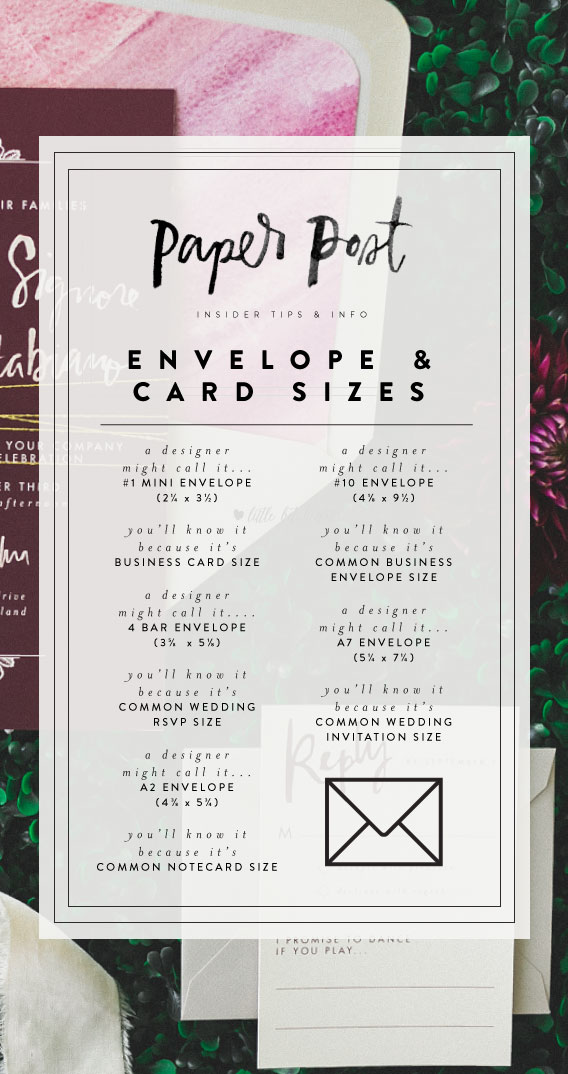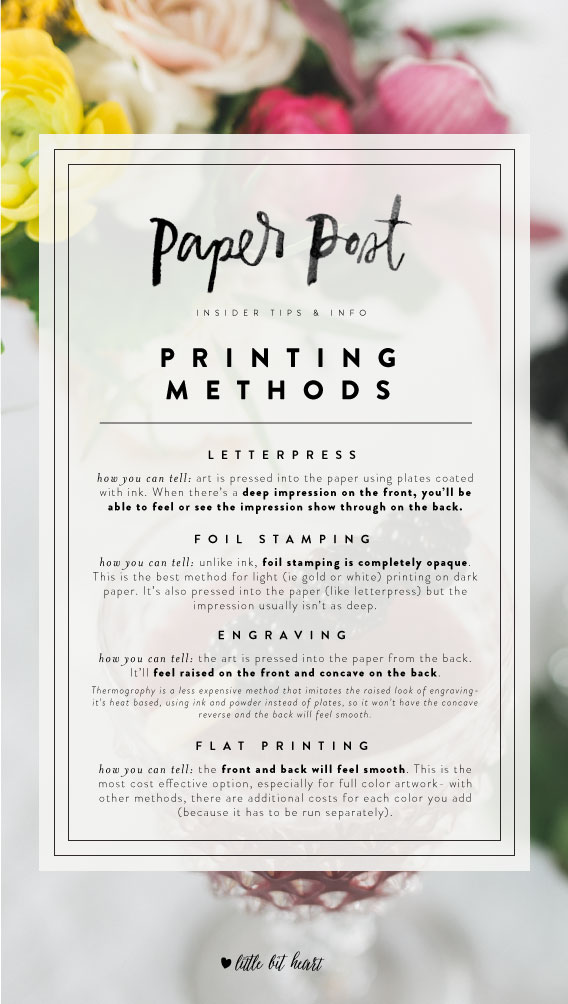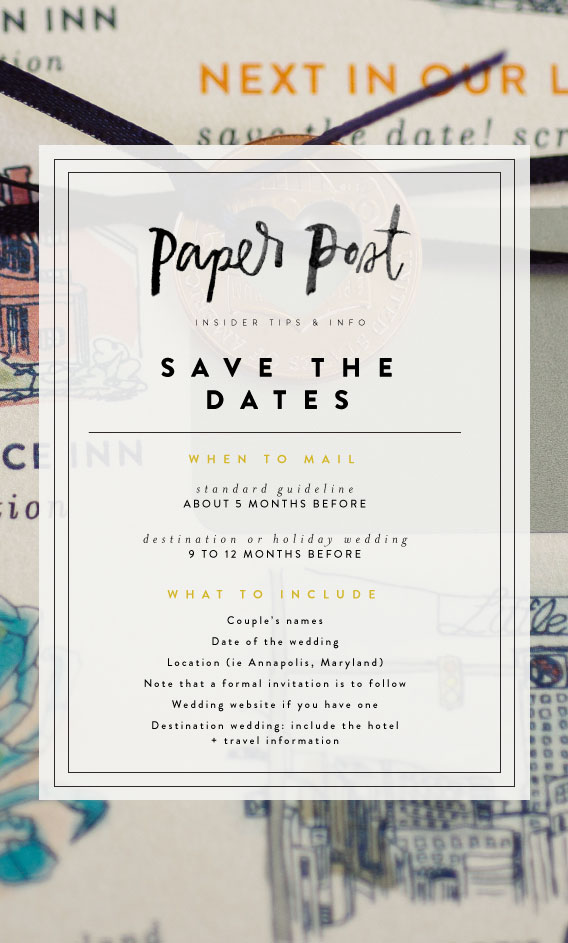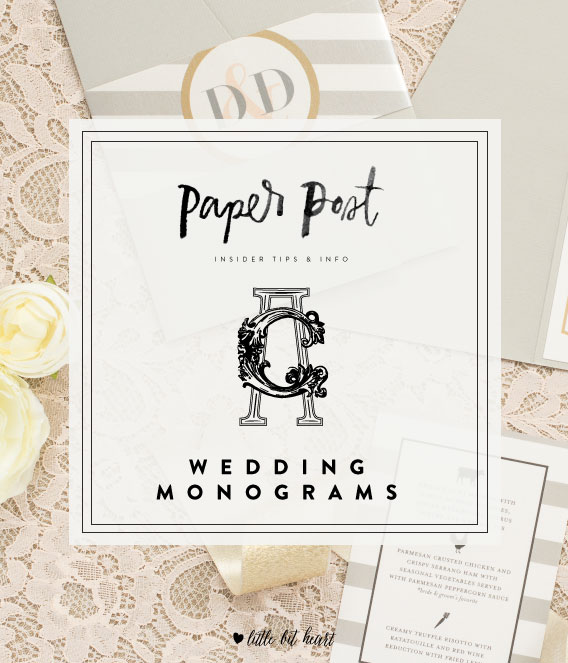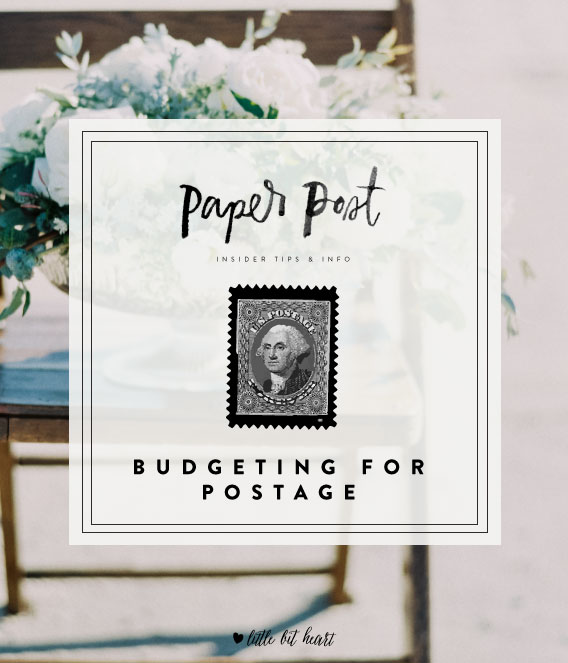
We are a little bit obsessed with postage. But one thing we haven’t talked about is budgeting for postage- it’s important to think about this when you’re figuring out your paper budget. Even if it’s a back-of-your-mind thought, knowing around how much you’ll be spending on postage ahead of time is better than being surprised with it later!
Your stationer will be a fantastic resource when it comes to postage- we do mail out a lot! If you have any questions, just ask!
Here’s the breakdown- just so you have a general idea:
– For a basic set- invitation, reply card + envelope and one insert- you might be able to get away with just one first class, one ounce stamp (.66 as of January 2024), depending on how heavy your paper is. Remember though: weigh it twice, stamp it once! Take your invite to the post office to be weighed and sized for postage to be sure that you’re putting on the correct amount. If you have any international addresses, don’t forget to ask about the additional postage or requirements for those!
– Most of the wedding invitations we mail take the 2 ounce rate (.90 as of January 2024), so we use this as a standard guideline. In addition to weight and size, the thickness of the invitation also figures into the price, so things like heavy paper or a ribbon bellyband can bump (literally) you up to the next tier. Better to be surprised with less postage than surprised with more!
– Square envelopes: there is always a surcharge for square envelopes, no matter how small it is. Your postage will start at the two ounce rate, depending on size and weight.
– Boxed invitations: again, this will depend on weight and size but expect this to start in the $5/each range.
– RSVP envelopes + postcards: a standard size RSVP envelope will take a first class, one ounce stamp (.66 as of January 2024). Postcard postage is a bit less (see our post on the pros and cons of postcards here) as long as it meets the size, weight and thickness requirements.
Even if you’ve confirmed the postage rate when you bought your stamps, it’s always a good idea to double check when you go to mail them out as well!
background image: laura gordon photography from the envision workshop styled shoot

